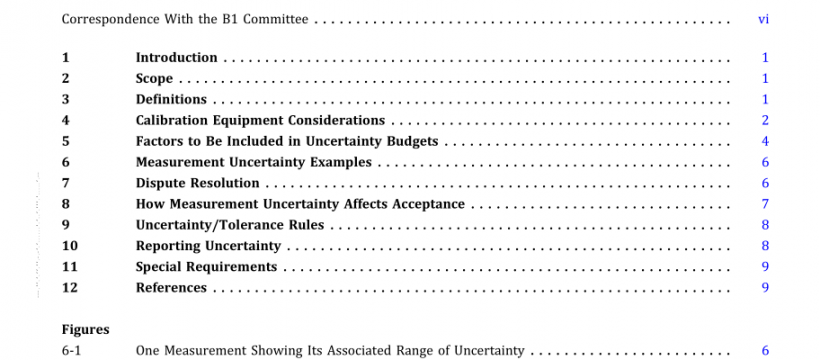ASME B1.25:2019 pdf free download
ASME B1.25:2019 pdf free download.Measurement Uncertainty Factors in the Calibration of Screw Thread Gages
8.1 Acceptable Measurements That Ignore Uncertainty
Figure 8.1-1 illustrates the common practice in many countries, where, as long as the reading of size is on or within the plus or minus limits for size, the gage is considered to be satisfactory. This situation essentially ignores the measurement uncertainty attached to such readings, but such acceptance can lead to measurement disputes when the same gage is calibrated by facilities with the same or different uncertainties.
For consistency, this method of applying uncertainty requires an agreement between all parties with respect to the maximum uncertainty that would be permitted for each feature to which it is applied. It should be remembered that no matter how small that uncertainty might be, it can still allow acceptance of gages that are outside of the limits and rejection of gages that are inside them.
8.2 Acceptable Measurements That Include Uncertainty
Figure 8.2-1 illustrates a situation thatensures a gage’s calibrated values do notallowitto be outside oflimits due to measurementuncertainty. The readings of size plus the associated uncertainties do not exceed the limits for the gage.
This allows readings with higher uncertainty to verify the gage is within limits as long as this ruleis followed. Ona practical level, acceptable readings are reduced by the extent of the uncertainty, but the goal of ensuring a gage is within certain limits is maintained. This situation is common in Europe and elsewhere, but there are difficulties in applying itto gages made to North American standards due to their narrower tolerance bands.
Some newgage tolerances are atthe limits formeasure- ment technology, and that means uncertainties are proportionately too large. Historically, 10% of the gage tolerance would be an acceptable level for commercial work. However, since measurement studies have shownthatsomeofthe usual methods forgage calibration are notas accurate as firstthought, the 10% rule has been expanded to allow for such situations.
ASME B1.25:2019 pdf free download
